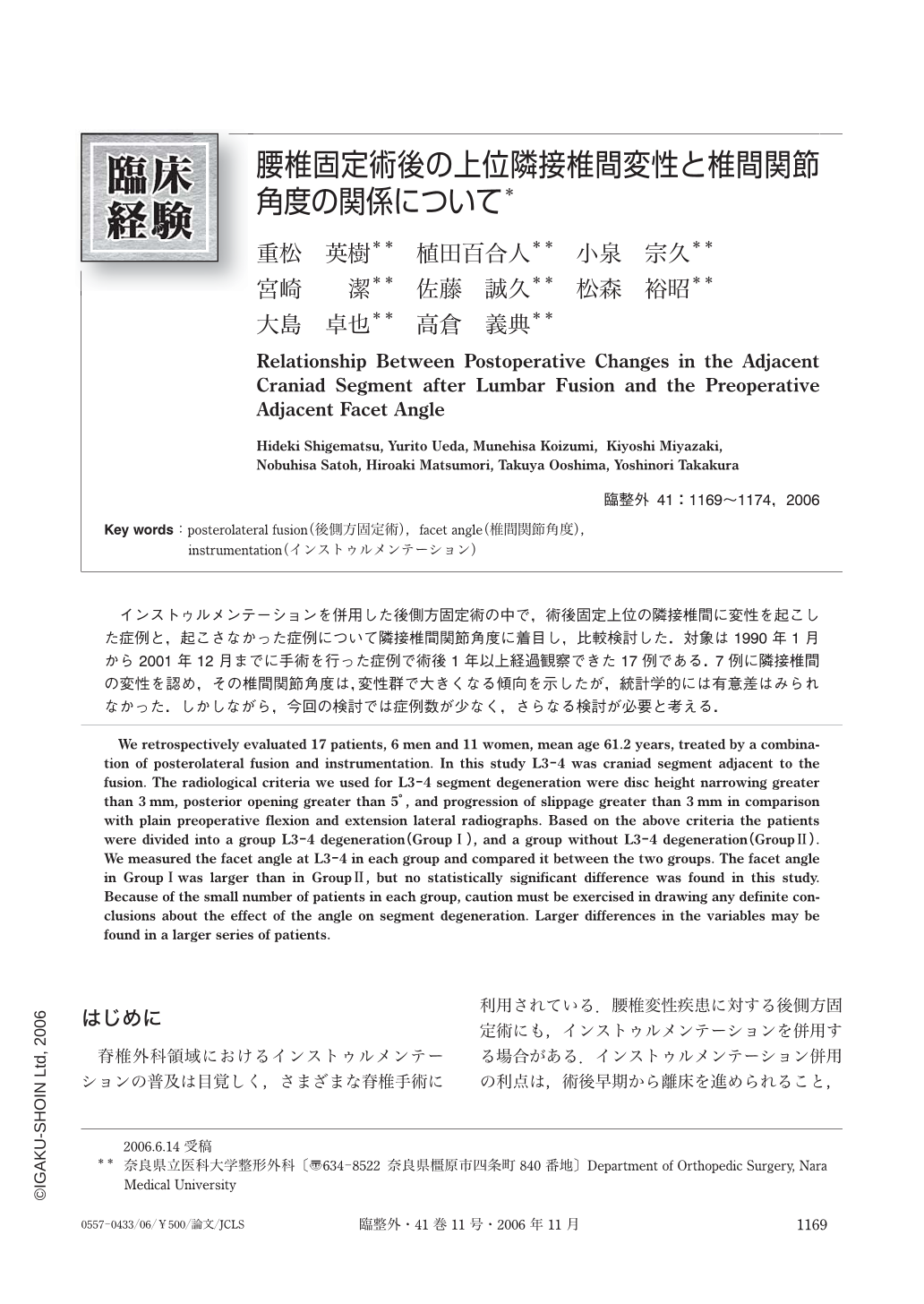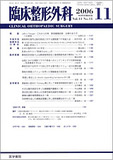Japanese
English
- 有料閲覧
- Abstract 文献概要
- 1ページ目 Look Inside
- 参考文献 Reference
インストゥルメンテーションを併用した後側方固定術の中で,術後固定上位の隣接椎間に変性を起こした症例と,起こさなかった症例について隣接椎間関節角度に着目し,比較検討した.対象は1990年1月から2001年12月までに手術を行った症例で術後1年以上経過観察できた17例である.7例に隣接椎間の変性を認め,その椎間関節角度は,変性群で大きくなる傾向を示したが,統計学的には有意差はみられなかった.しかしながら,今回の検討では症例数が少なく,さらなる検討が必要と考える.
We retrospectively evaluated 17 patients, 6 men and 11 women, mean age 61.2 years, treated by a combination of posterolateral fusion and instrumentation. In this study L3-4 was craniad segment adjacent to the fusion. The radiological criteria we used for L3-4 segment degeneration were disc height narrowing greater than 3mm, posterior opening greater than 5°, and progression of slippage greater than 3mm in comparison with plain preoperative flexion and extension lateral radiographs. Based on the above criteria the patients were divided into a group L3-4 degeneration (Group Ⅰ), and a group without L3-4 degeneration (Group Ⅱ). We measured the facet angle at L3-4 in each group and compared it between the two groups. The facet angle in GroupⅠwas larger than in Group Ⅱ, but no statistically significant difference was found in this study. Because of the small number of patients in each group, caution must be exercised in drawing any definite conclusions about the effect of the angle on segment degeneration. Larger differences in the variables may be found in a larger series of patients.

Copyright © 2006, Igaku-Shoin Ltd. All rights reserved.


